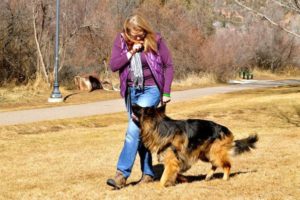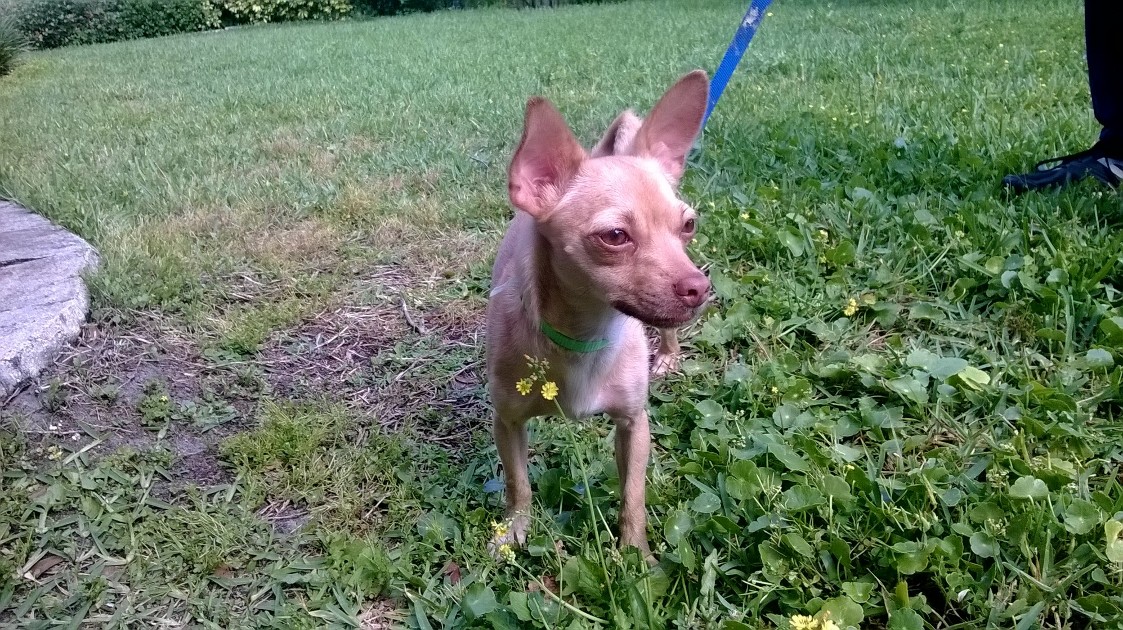My dog Rio, a friendly Lab mix and former therapy dog, has been attacked numerous times over the years by other dogs – both leashed and unleashed. Once, we even had a dog jump out a car window to try to bite Rio. Panicked, I screamed while Rio defended himself before the owner came running from a restaurant patio to pull her dog off mine. It was terrifying.
Fortunately, Rio didn’t develop fear-based reactivity. But after such an attack, many dogs do.
Annie Phenix, CPDT-KA, a dog trainer who is a certified Fear Free professional, Canine Good Citizen evaluator, and author of “The Midnight Dog Walkers: Positive Training and Practical Advice for Living With a Reactive or Aggressive Dog,” says these incidents can not only lead to emergency veterinary bills, but also to an emotional cost for the dog.
“Some dogs can bounce back, but many more now have been taught to be fearful for good reason of other dogs,” she says. “If it happens to a puppy in a fear period, that dog can face a lifetime of fear just going on a neighborhood walk without serious and qualified help from a trained professional.”
There’s hope after an attack. For the past two decades, Phenix has helped countless dogs overcome anxiety and fears using positive training methods.
“Positive training is the best way to help a dog change its inner dialogue from fear to trust and even confidence,” she says.
But she has also grown frustrated by the number of times her rehabilitated clients have later been attacked by charging, off-leash dogs. She knows people with small dogs, who can be particularly vulnerable to attack, often fear walking their dogs in public.
“Owners with small dogs can often become members of the title of my book, ‘The Midnight Dog Walkers.’ They seek early morning or really late hours to walk in hopes that their dog will not run into any problems,” she shares.
So how can we keep our dogs safe on walks?
Phenix says that’s a source of debate in the dog world, with some advocating that people carry weapons to protect their pets. Her own advice includes the following:
- Understand that it’s possible on any outing to run into a potentially dangerous dog.
- Have a plan and practice it when there is no emergency situation. For instance, some people train their dogs to move behind their legs. Phenix

Photo by Tica Clarke Photography likes to teach dogs to do an emergency U-turn with a “Let’s go” cue from their person.
- Avoid confrontations. When another dog approaches, cross the street or move behind a tree, car, or other obstruction to keep dogs from staring at one another and to allow each dog a sense of safety.
- Be prepared to say whatever you need to say to encourage the other dog walker to restrain their pet. This can include “My dog is injured” or “My dog will bite” – even if he won’t. “My dogs have plenty of canine friends and they are under no obligation to ‘say hi’ to dogs we meet on city walks,” Phenix says.
- If you are going to carry something that offers protection for you and your dogs, know how to use it. Phenix recommends non-lethal items; she carries a large, visible canister of bear spray. “I’ve had to use it two times when two large dogs rushed my senior Border Collies,” she recounts. “I sprayed the street in front of me – my dogs were behind me – and both times the oncoming dogs hit the bear spray smell, stopped in their tracks, and retreated.”
- Report all encounters. If possible, try to take a video on your cell phone if you can do it safely. “Imagine if your dog is attacked and you do not report it and later you learned a child was seriously harmed by that same dog,” she says. “Sometimes there is no human with the dog; it is a stray or got out of a yard. You should still report it.”
Phenix says the time to stop a fight is before it happens, but if your dog is attacked, try not to scream, which will increase everyone’s stress factor. Instead, do your best to stay calm. Make a loud, distracting noise to interrupt the fight if, for instance, there’s a nearby metal trash can to throw on the ground. You could potentially try to cover a dog’s face with a heavy coat or grab your dog’s leash and try to pull yourselves away, though these options can carry risks.
“If you have a deterrent like bear spray, spraying nearby or even at the dogs is a better option than allowing a dangerous fight to continue,” she says. “Once a fight starts, do whatever you can safely do to break it up as quickly as you can.”
Phenix emphasizes that responsible pet owners do not permit their dogs to harass, stalk, chase, or rudely greet other people’s dogs – and they obey leash laws, which exist to protect everyone. She compares leash laws to stop signs.
“If you ignore a stop sign, you can not only endanger other drivers, you might very well get an expensive ticket,” she says.
While it’s important for dog lovers to be aware of potential attacks on any walk and take measures to keep ourselves and our dogs safe, Phenix says it’s also important to continue taking walks with our dogs.
“Walking and sniffing outside is a core need for our dogs,” she says. “We should not have to stop enjoying that with our best friends because of some truly irresponsible dog owners out there. I say, ‘Walk on – but be prepared!’”
This article was reviewed/edited by board-certified veterinary behaviorist Dr. Kenneth Martin and/or veterinary technician specialist in behavior Debbie Martin, LVT.
Award-winning journalist Jen Reeder is former president of the Dog Writers Association of America.








